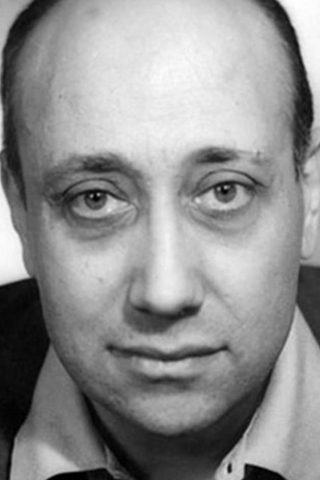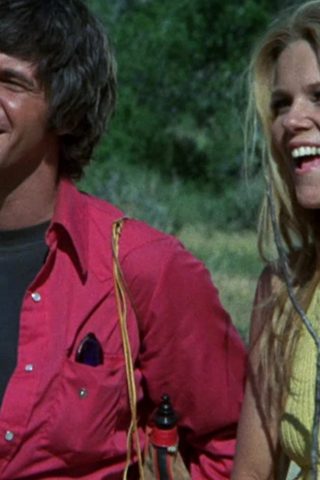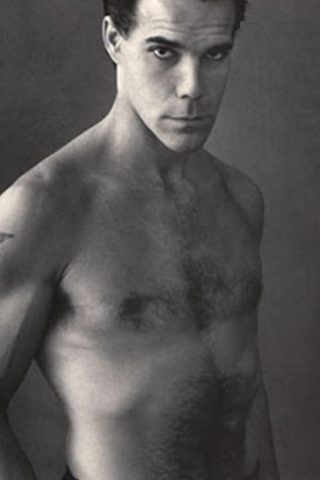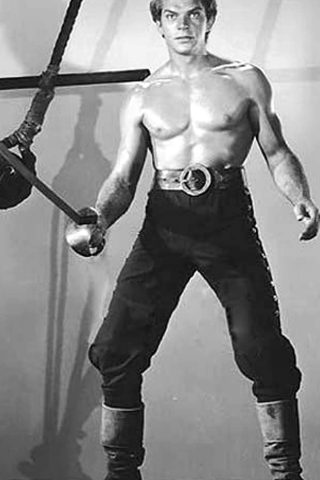
| Name | Jean-Pierre Melville |
| Phone |  |
| Email ID |  |
| Address |  |
| Click here to view this information |
The name “Melville” is not immediately associated with film. It conjures up images of white whales and crackbrained captains, of naysaying notaries and soup-spilling sailors. It is the countersign to a realm of men and their deeds, both heroic and villainous. It is the American novel, with its Ishmaels and its Claggarts a challenge to the European canon. It is Herman Melville. And yet, for over three decades, it was also worn by one of the French cinema’s brightest lights, Jean-Pierre Melville, whose art was as revolutionary as that of the eponymous author.
Jean-Pierre Grumbach was born on October 20, 1917, to a family of Alsatian Jews. In his youth he studied in Paris, where he was first exposed to great films, among them Robert J. Flaherty’s and W.S. Van Dyke’s silent documentary White Shadows in the South Seas (1928). It left so deep a mark upon the pubescent Grumbach that he became a regular at the cinema, an obsession that would benefit him in adulthood. His own earliest efforts, 16mm home movies, were made with a camera given to him by his father in this period. In 1937, however, his career was forestalled when he began obligatory service in the French army. He was still in uniform when the Nazis invaded in 1940; under the nom de guerre of Melville, he aided the Resistance and was eventually forced to flee to England. There he joined the Free French forces and took part in the Allies’ liberation of continental Europe. After the war, despite a desire to revert to Grumbach, he found that pseudonym had stuck.
Eager to earn his place in the movie industry, Melville applied to the French Technicians’ Union but was denied membership. Undaunted by what he regarded as party politics, he set up his own production company in 1946 and started releasing films outside the system. The first, a low-budget short titled 24 heures de la vie d’un clown (1946), was a success, inspired by his boyhood love for the circus. His feature-length debut, Le Silence de la Mer (1949), was highly innovative. An intimate piece on the horrors of World War II, it starred unknown actors and was filmed by a skeleton crew. Its schedule was unusual: It was shot over 27 days in the course of a year. Its production was unusual: it incorporated “on-location” scenes–rarities in that era–done without vital permits. Its provenance was unusual: it was adapted from a book before the author’s consent was obtained. Above all, its style was unusual. Its dark, claustrophobic sets and bottom-lit close-ups signaled a departure from the highly cultured cinema of René Clair, Marcel Pagnol, Abel Gance and Jacques Feyder. It was neither comedietta nor costume drama nor avant-garde “cinéma pur.” Where its roots may have been in Jean Renoir’s La Grande Illusion (1937), it was clearly something new.
Over the following 12 years Melville continued to create films that would influence the auteurs of La Nouvelle Vague (i.e., the French New Wave.) In 1950 he collaborated with Jean Cocteau on an unsatisfying version of Les Enfants Terribles (1950), the tale of a strange, incestuous relationship between siblings. Quand tu liras cette lettre (1953), with French and Italian backing, was his first commercial project. While it was unprofitable, the fee he received allowed him to establish a studio outside of Paris. His next work, Bob le Flambeur (1956), featured Roger Duchesne, a popular leading man of the 1930s who had drifted into the underworld during the war. As such, he was a uniquely apt choice for the role of the fashionable, self-immolating Bob. His supporting cast included Daniel Cauchy as toadying sidekick Paolo and newcomer Isabelle Corey as the temptress Anne. Although the picture was not a hit, it was a favorite of the aficionados that frequented Henri Langlois’ Cinémathèque Français. Among them were the young savants Jean-Luc Godard and François Truffaut, the latter of whom used Guy Decomble of “Bob le flambeur” in his The 400 Blows (1959) that ushered in the “New Wave” era. They adored the hip, new rendering of a tired scenario, much of it shot in the streets with hidden cameras. They viewed it as fresh and daring, a “freeing up” through the rejection of high-minded literary adaptations and the embracing of pop culture. Simply put, Melville refused to play by the rules, and they followed suit.
In retrospect, “Bob le flambeur” seems straightforward: A reformed mobster turned high-stakes gambler comes out of retirement to pull one last job. Its genius lies in its simplicity. Melville admired American culture, as his alias indicated. He drove around Paris in an enormous Cadillac, sporting a Stetson hat and aviator sunglasses. He drank Coca-Cola and listened to American radio. The works of American directors John Ford and Howard Hawks were appealing to him, as they were ageless sagas of heroes and villains. Melville strove to build his own pantheon by blending the American ethos with his postwar sensibilities. As he perceived it, it was America that had valiantly rescued France from German occupation. Still, for a young man with Alsatian roots, the line separating good guys and bad guys had been breached, and one can see this disillusionment from Le Silence de la Mer (1949) onward. Thus, while he borrowed from the American noir’s revolt against the dichotomous Hollywood creations of the 1930s, the artist was forging his own apocryphal brand of dark tragedy. In his paradigm, a criminal could be a kind of hero within his milieu, so long as he stuck by his word and his allegiances. It was his personal style and his adherence to the code of honor that defined a “good guy”; obversely, it was his faith in others that was his downfall. It is a universe without the possibility for salvation, in which love and friendship are brief interludes in the cat-and-mouse games that lead to certain destruction. In that sense, Bob is a crucial link between Julien Duvivier’s Pépé le Moko (1937) and Godard’s Breathless (1960), in which Melville gave a brilliant cameo performance.
Jean-Pierre Melville is often regarded as the godfather of the Nouvelle Vague. Nonetheless, it is worth mentioning that had it not been for his aforementioned passion for American film, he might have shown us a very different “Bob le flambeur”. Originally conceived as a hard-boiled gangster flick about the step-by-step plotting of a heist, Melville was forced to rethink its narrative after watching John Huston’s remarkably similar The Asphalt Jungle (1950). It was only then that he had the idea to turn Bob into the comedy of manners that so delighted the cinephiles of the day. For this and other debts of gratitude, his next picture, Deux hommes dans Manhattan (1959), was “a love letter to New York” and the America he revered. It was also his third straight box-office flop, however, and it caused Melville to break away from a New Wave movement that he felt catered to the cognoscenti. He later said, “If . . . I have consented to pass for their adopted father for a while, I do not wish it anymore, and I have put some distance in between us.”
The first step in this split came with Léon Morin, Priest (1961), a wartime piece about a priest’s endeavors to bring redemption to the inhabitants of a small town. Produced by Carlo Ponti, it was a big-budget affair with Jean-Paul Belmondo and Emmanuelle Riva, both household names by then. On the strength of its favorable reception, Melville released four consecutive cops-and-robbers movies, the most notable of which were Le Doulos (1962) and Le Samouraï (1967). Belmondo again headlined in “Le Doulous”, not as a clergyman but as the fingerman Silien, whose loyalty to his old mob cronies entangles him in a web of intrigue and disaster. During the making of “Le Samouraï”, a hauntingly minimalist film about a doomed assassin, Melville’s studio burned to the ground and the project was completed in rented facilities. Regardless, it was a critical and commercial success. Presenting Alain Delon as ultra-cool assassin Jef Costello, it was considered one of the most meticulously-crafted pictures in the history of the cinema. Delon would later star in a second masterpiece, Le Cercle Rouge (1970), featuring the ultimate onscreen jewel heist. His Charles Bronson-cum-Jack Lord sang-froid toughness served as a counterpoint in Melville’s oeuvre to the lighter and less predictable Belmondo. Another memorable production was Army of Shadows (1969), an austere portrait of perfidy within the ranks of the French Resistance.
It is trite to say that a particular artist is “not for everyone.” In Melville’s case, this statement could not be more fitting. Despite a round belly and an unattractive face, he was a notorious womanizer, and his chauvinism is painfully obvious in his movies. They are cynical, male-driven works in which women are devoid of nobility, merely functioning as beautiful chess pieces. His men also lack spiritual depth, diligently playing out their roles toward the final showdown. A “profound moment” inevitably occurs before a mirror, a cliché for which many critics do not share the creator’s enthusiasm. As a result of these peccadilloes, as well as its lack of back-stories and character motivations, Melville’s later output has been accused of stiffness, with its wooden troupe of cops, crooks and general mauvais sujets. Further, well-structured plots notwithstanding, Melville films are methodically paced with tremendous attention paid to time and place. Hollywoodphiles often find them slow, with an overemphasis on tone and style.
Some have gone as far as to claim that the réalizateur’s genius was outstripped by his importance to the development of the medium. They look to him as a sort of Moses figure, helping to guide the Nouvelle Vague to the promised land without partaking in its fruits. At his death by heart attack in 1973, the 55-year-old had directed just 14 projects, at least six of which are acknowledged classics. Aside from Godard and Truffaut, luminaries such as John Woo, Quentin Tarantino, Michael Mann, Volker Schlöndorff, Johnnie To and Martin Scorsese have pointed to him as an key influence. If a man’s legacy is best measured not only by its quality but by the respect of his colleagues, Jean-Pierre Melville’s contribution to cinema surely ranks with the greatest.
Details
Jean-Pierre Melville Keywords
Jean-Pierre Melville Contact Details, Jean-Pierre Melville Facebook, Jean-Pierre Melville Instagram, Jean-Pierre Melville Phone Number, Jean-Pierre Melville Cell Phone, Jean-Pierre Melville Address, Jean-Pierre Melville Whatsapp Number, Jean-Pierre Melville Whatsapp Group, Jean-Pierre Melville Email, Jean-Pierre Melville Phone Number 2020, Jean-Pierre Melville Twitter Account




